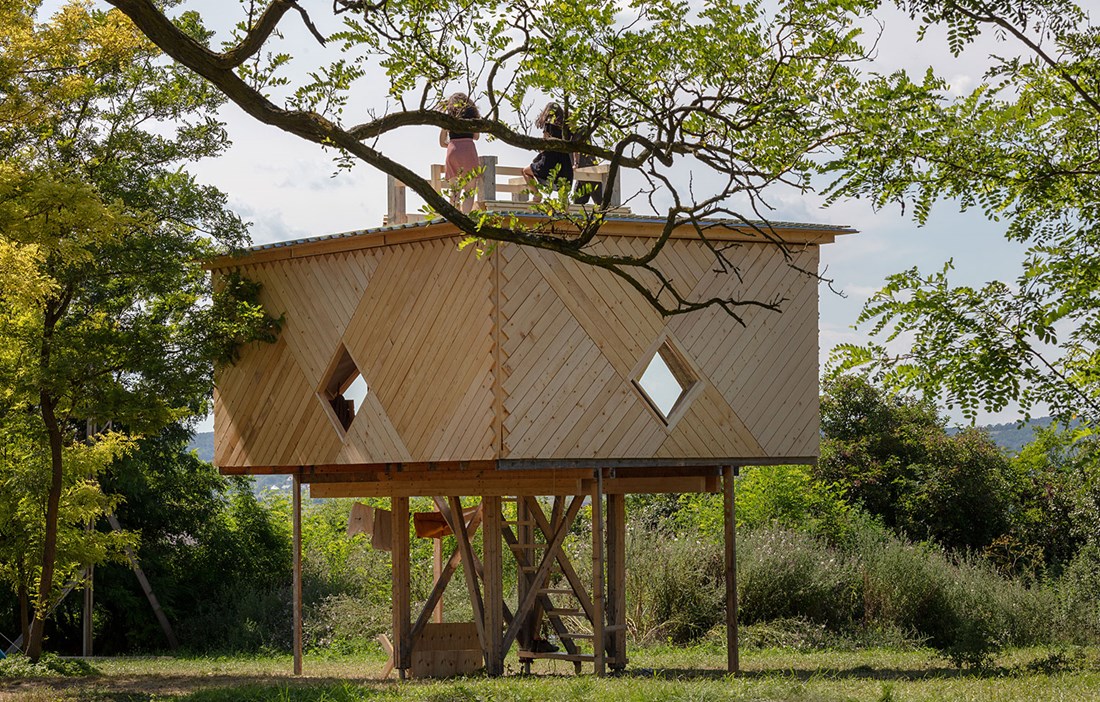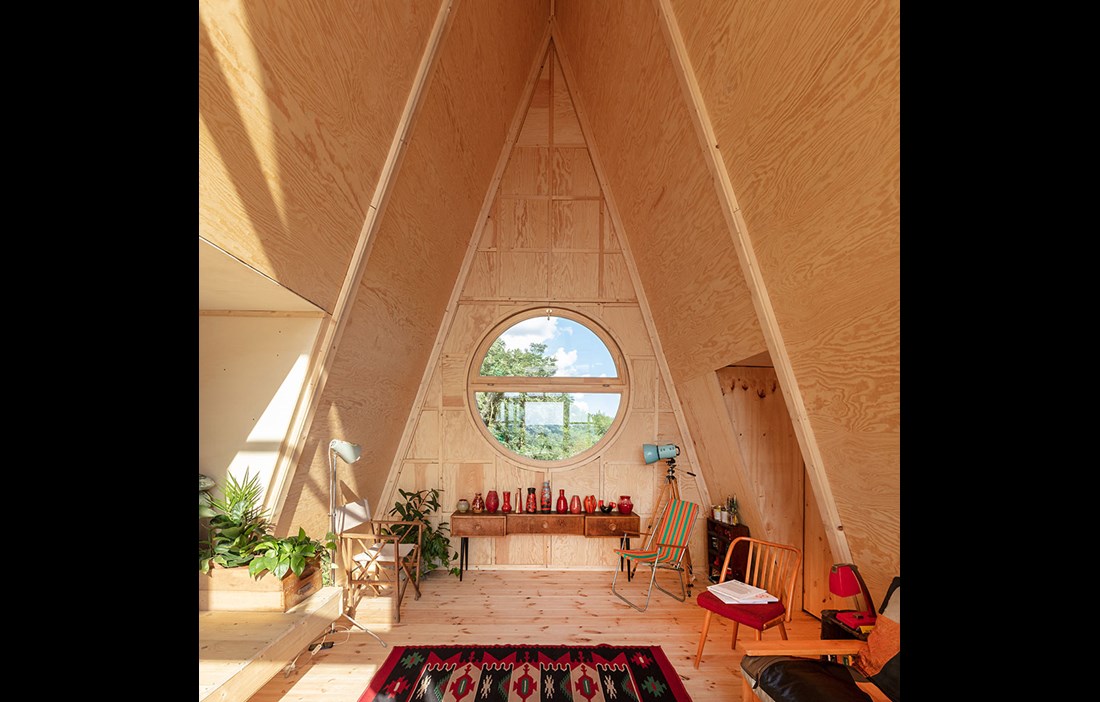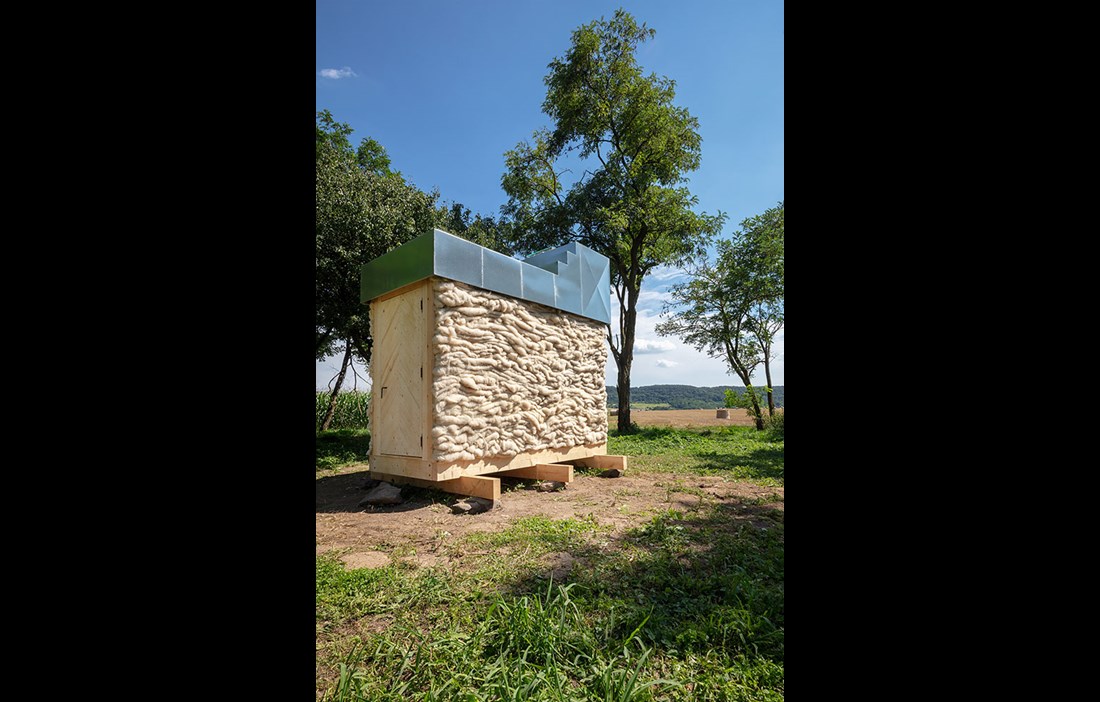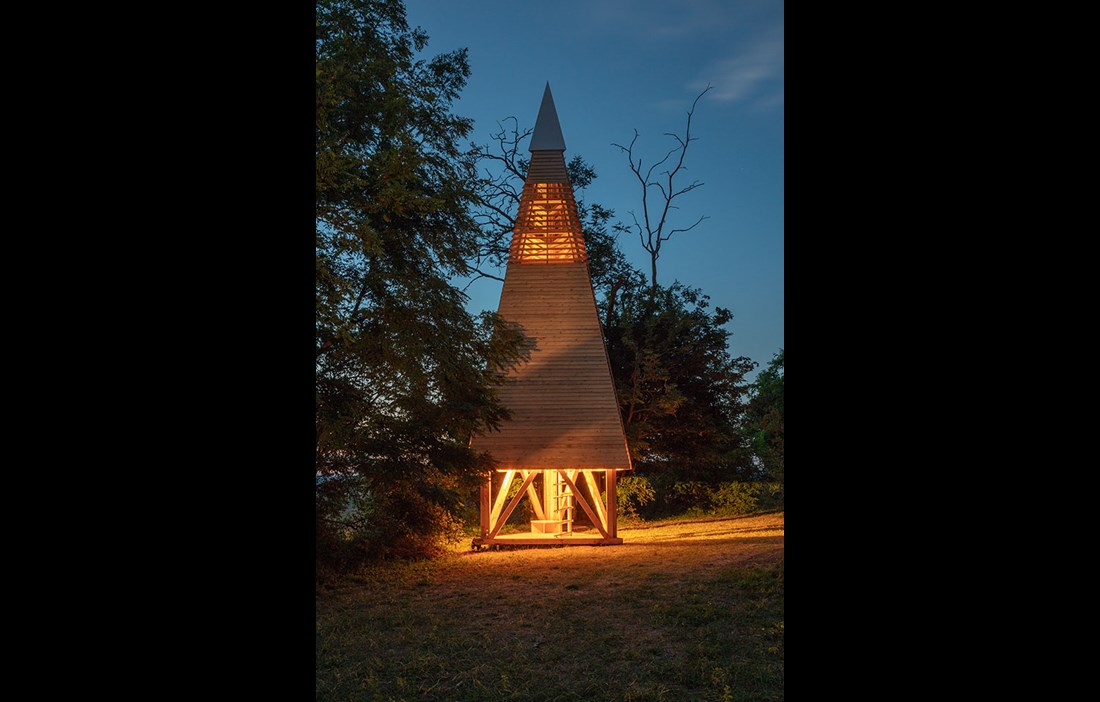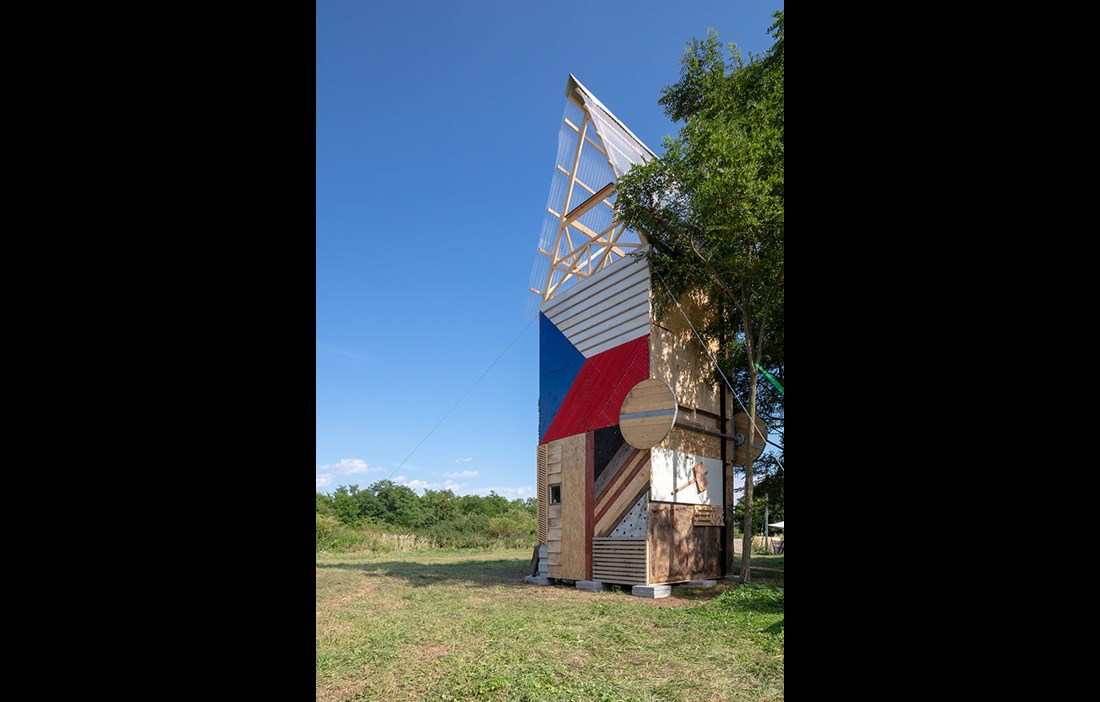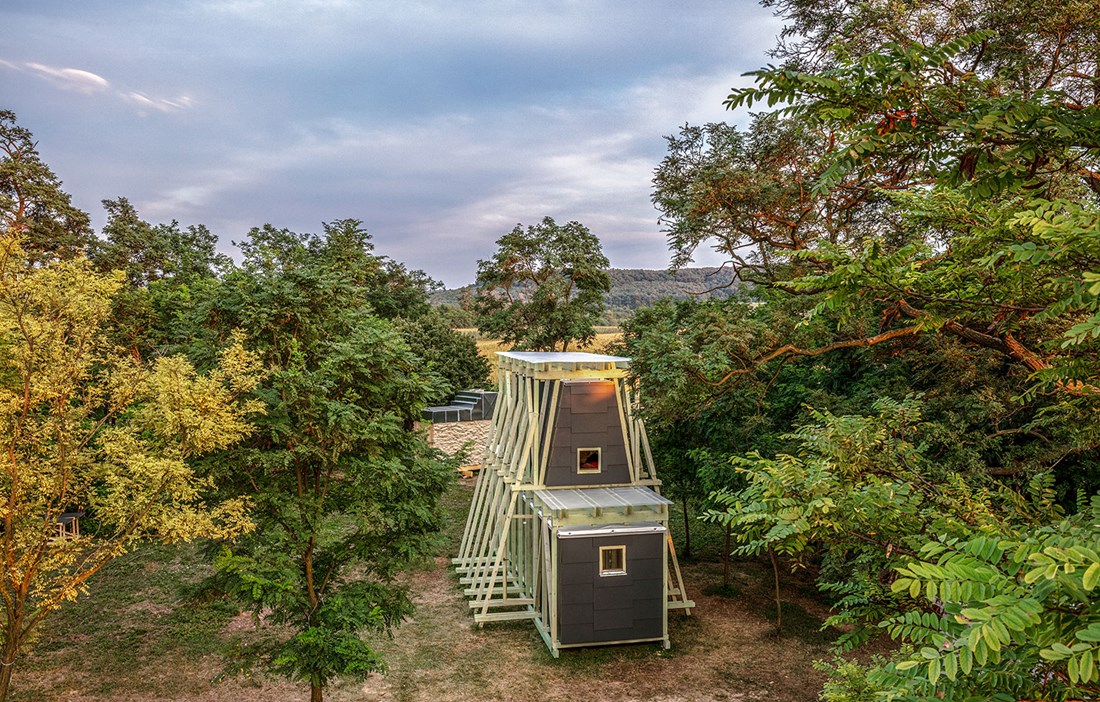In the lush Hungarian countryside lies the little village of Csóromfölde, where Hello Wood has been held for eight of the nine years that the festival has taken place. Initially the focus of the project was mainly on giving Hungarian architecture and design students an opportunity to leave the theoretical learning environment and apply their skills in practice. But as interest has grown, the festival has taken on a much more global outlook, attracting students from all over the world. The theme this year, ‘Cabin Fever’, picks up on a popular trend that takes in the longing to get back to nature and the need to build housing on a small scale that people can afford.
“In contrast to previous years, we’ve also encouraged more enduring designs. The plan is that the students who come to us next year will be able to live in these cabins,” explains Orsi Janota, education director for Hello Wood.
The cabin projects have been led by various architectural practices that were chosen via a competition. The jury was made up of architects from event partners Kengo Kuma & Associates, Raumlabor, PUP Architects and the research lab IRA-C.
“In previous years, much of the design and function has been created on site. But since this year’s theme was more complex and we only had a week to get everything finished, more preparation than usual was required. There has still been plenty of scope to work experimentally and to adapt the cabins to the surrounding landscape and the students’ ideas,” says Orsi Janota.
A prime example of this is ‘The vertical cabin’, which was created under the leadership of H3T Architekti from Prague, with many of the details designed on site. To make it mobile, wheels were put on the cabin, which weighs in at 2 tonnes and is almost 8 metres tall. However, the wheels were put on one of the walls, rather than underneath, so the building has to be tipped onto its side to be moved. To make the move a practical option, the furniture has to be anchored to the floor – which of course becomes a wall during the actual move.
“It’s not fully completed yet and you can’t live in it at the moment. But we love this balance between something that is extremely professional and considered on the one hand and very playful and free on the other,” adds Orsi.
Her personal favourite this year was AU Workshop and Martin Low’s wool cabin with a wooden structural frame clad entirely in wool, both externally as the façade material and internally as insulation. Having 20 cm thick layers of wool with an air gap of the same size between them protects the heart of the cabin from damp and insect ingress, even if they manage to get through the outer layer. The contemplative cabin is designed for just one person, who can either sit or lie down. The inspiration comes from the imagined positions between a psychiatrist and their patient, where you can choose whether you want to be the person asking the questions or answering them.
“Because this cabin was so tiny, it really provided room to focus on the details, such as the design of the handle,” says Orsi Janota.
The other cabins have mainly used pine as their material, as well as plywood and prefabricated panels of Fundermax, a hard fibreboard. The students have also had an opportunity to work with a new, completely recyclable, mineral wool insulation from the Lafarge Holcim Group, one of the largest cement manufacturers in the world, as a test before its market launch.
“Our project has attracted an incredible amount of attention, which has helped to make working in wood much more popular here in Hungary, a country that has never really had a very strong tradition of wood construction,” concludes Orsi Janota.
Text Sara Bergqvist

